Have you heard of the remarkable student from Ishikawa Prefecture, near the middle of the Japanese archipelago? A three-time national champion in competitive typing, securing the title once in junior high and twice in high school. Her name is Reira Matsuzuru. Matsuzuru currently spends her days preparing for college entrance exams and for her final typing national contest as a senior high school student. And apparently, she has always had a strong attachment for HHKB. We asked her for her thoughts on using the HHKB Professional HYBRID Type-S Snow model and her assessment of the keyboard.
Competitive typing is a sport!
Matsuzuru has been awarded three times as Japan’s top competitive typist at the Mainichi Personal Computer Typing Contest, a national competition. Three qualifying contests are held each year, with tens of thousands of people participating in each enormous event. Only the top 10 qualifiers will be able to compete at the national contest held in winter.

Japan’s three-time champion, Reira Matsuzuru
HHKB: How are points awarded in such a contest? How does one compete?
Matsuzuru: The competition is based on how many characters of a news article you can type within the time limit of five minutes, and points are awarded according to the number of key strokes and other special points. Special points are things like a 20% point increase to the number of strokes if you had zero mistakes. If you have nine or more mistakes, you’re disqualified, so the competition tests both accuracy and speed.”
Just how fast can Japan’s greatest type? Matsuzuru granted us a live demonstration!
In just one minute, she accurately typed 197 Japanese characters without any typographical errors and omissions!
HHKB: What was it that initially led you down the path of competitive typing?
Matsuzuru: Around my first year of elementary school, my mom was doing administration work, and it seemed so difficult. And I wanted to do something to help her. That’s when my mom told me about a computer class that was accepting students. Through that computer class, I was coached on typing. Thinking about it now, I’m really glad for that, as this experience prevented me from developing any weird typing habits.
Typing practice usually starts with inputting Japanese words using Roman characters. But to learn touch typing, we practice with our hands covered, so we couldn’t see them as we practiced the strokes.
By the time I was a third grader, I could type without looking at my hands, so I tried entering a typing contest that the class teacher suggested. And that’s how it all started. Although, from third through sixth grade, I wasn’t able to perform well enough to win anything. I even came in last sometimes. That period lasted for a long time, and I was repeatedly disheartened, but I think it’s because of that experience that I am who I am today.
My mom always gave me all sorts of mental support. And I received lots of letters of encouragement, which made me really happy and inspired me to keep at it.
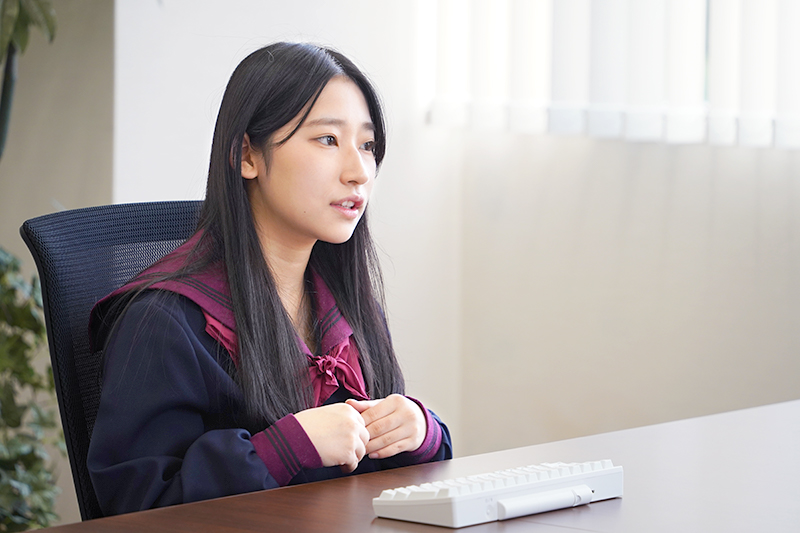
Matsuzuru explaining how she started competitive typing
I feel like I'm proficient at promptly deciding whether to type longer or shorter sentences and inputting them accurately. For Chinese characters and names, there are so many that sound the same but use different characters, but I can instantly decide which reading to use. To type quickly and accurately, I practice daily, trying to find out how far I can type without converting the characters and how to output certain Chinese characters quickly.
I think competitive typing is a lot like sports in how you practice every day, honing your speed and accuracy, for that one chance to compete at the main event. I’m not much into sports, but typing also puts a lot of importance on the mental aspect, which is also sports-like.
It’s disappointing when you don’t get the results you want. But I’m an especially sore loser, and I think it’s my competitive nature that has allowed me to get this far.
I always admired the HHKB. It’s soft, feels good to press, and is easy to type on.

HHKB: What type of keyboard do you use?
Matsuzuru: Until competing in the Mainichi Personal Computer Typing Contest, I used a standard keyboard that you can buy at any electronics store. The national contest has two official keyboards that you can choose from to compete. When I joined my first national contest as an elementary school sixth grader, they asked me if I would use REALFORCE or HHKB. I chose the REALFORCE because it had a number pad and resembled my keyboard at home. When I tried it out, the feeling was totally different. I was like, ‘It’s so easy to type! The keyboard makes such a difference!’ It left a big impression. After that, my mom bought me a REALFORCE, and I used that to practice until very recently. Since my introduction to HHKB at that contest, I always wanted to try it and this year I finally got to test out my first HHKB. Thinking about it now, I’m glad I got to use it before my last competition as a high schooler.
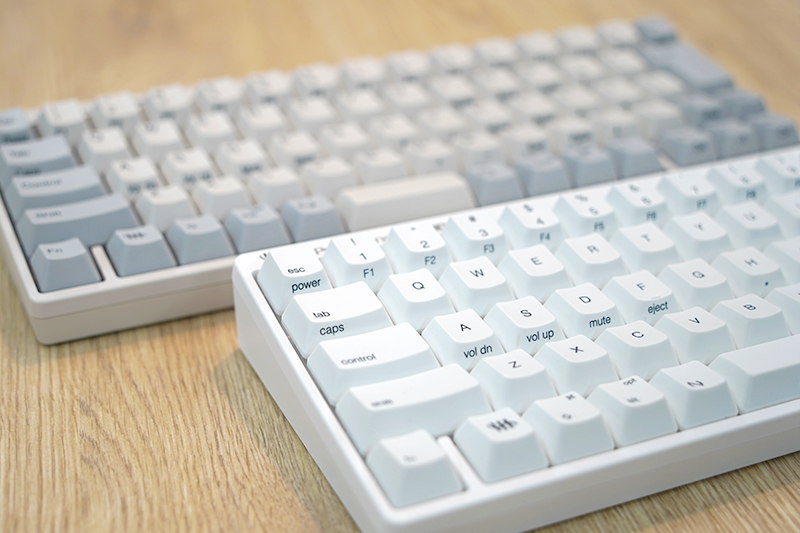
The HHKB that Matsuzuru says she admired
The arrow keys and key arrangement are a little different than the keyboards I’ve used up until now, which was weird at first, but the HHKB is soft and easy to type on. It feels good to use. That’s why lately I’ve been practicing exclusively on the HHKB, so I can get used to it and hopefully use it at the winter contest I’m preparing for, my last one as a high schooler. I’m currently using the HHKB Professional HYBRID Type-S Snow. Hitting keys on a regular keyboard feels stiff, like you have to put effort into the keystrokes. The HHKB is soft and yielding. You can input characters with very little effort, but you still feel like you’ve pressed the keys. The keyboard is really balanced on that perfect line. As you can see, my hands are small. So even though my hands move quickly over the keyboard to hit some of the keys, it’s important that I can input the characters without using much force to do so. This keyboard is good for that.
Also, I generally practice a lot, so it’s important that I don’t tire out easily. I can type on the HHKB without tiring. It feels good, and it’s just easy to type on.
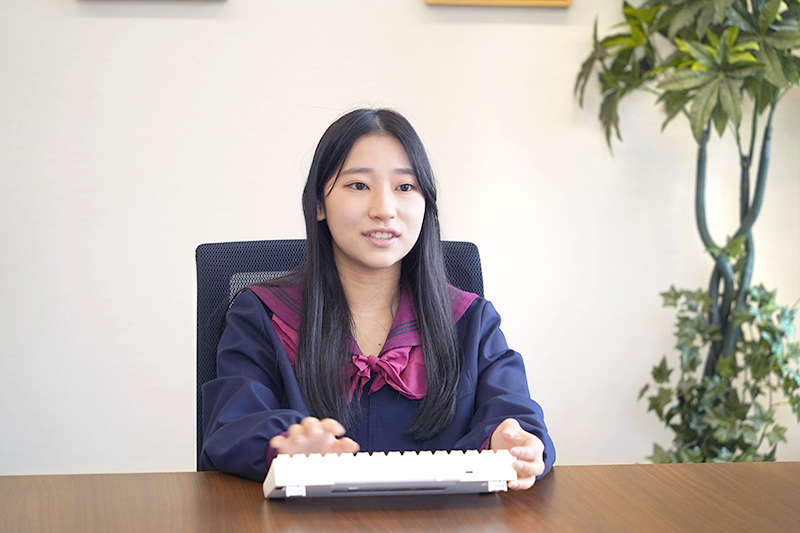
Matsuzuru speaking on the important points of keyboard selection
In addition, I’m a person who likes deep keys, so the HHKB is perfect. I can’t type on the shallow keys that you see on laptops. I don’t like it when I can’t feel that I’ve pressed a key.
Most of all, I really like the compact size of the HHKB. Because my hands are small, the size of the HHKB is so easy to use. I think the HHKB fits my hands better than any keyboard I’ve used up until now.
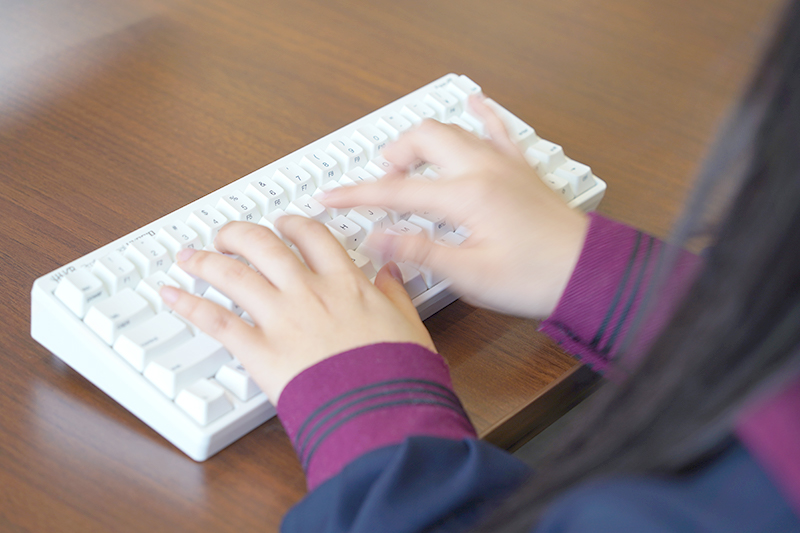
For her small hands, the compact size of the HHKB is perfect.
The bright white keyboard motivates me to practice and puts me in the mood.
HHKB: In addition to the feeling of typing on the keyboard are you particular about the look and design?
Matsuzuru: I prefer white and other bright colors over black. Even before using the HHKB, I was using an ivory keyboard. I’d like to use a MacBook when I enter university, but if the keyboard is white, it will go well with anything, and most importantly, I think it’s cute!
On the HHKB Snow model, the letters are small and slender, which I thought was very cute. Sure enough, I think it’s fun to type on a cute keyboard. It gets me excited and raises my motivation to practice.


The Snow model with its minimalist design is perfect for people particular about visuals.
HHKB: In addition to the feeling of typing on the keyboard are you particular about the look and design?What about another of the special characteristics of HHKB, its compactness?
Matsuzuru: I actually think it’s very important for a keyboard to be easily portable. Big keyboards are heavy, and it’s a little embarrassing when it sticks out of your bag. Every day, even when I’m busy, I always spend at least 15 minutes practicing, and on the weekdays leading up to a contest, it’s at least two hours. So, I carry my HHKB with me. Nowadays, even when I go on trips or stay overnight somewhere, I always carry my HHKB with me. The fact that it’s small, lightweight, and perfect for carrying around is a big plus for me.
I expect that once I’m a university student, my opportunities to use a computer will increase. But I don’t do well with the keyboards on laptops and don’t quite know how to use them properly. So I’d prefer to type on a keyboard that I’m used to. I’m pleased and grateful that the HHKB is easy to carry around and that I can take it with me wherever I go.”
HHKB: Is there anything you’d like to see more of with HHKB?
Matsuzuru: Actually, the height of the keyboard is very important to me. I prefer keyboards that are thick. I’m not great at hitting the number keys without looking, but if I look down completely, then I’ll lose my place in the text passage, so I don’t want to do that. I prefer being able to see the keyboard a bit in my periphery while looking at the screen as I type, so a taller keyboard enhances ease of use. I currently have the rear end slope of the HHKB adjusted to the tallest setting, but it could be even taller.”
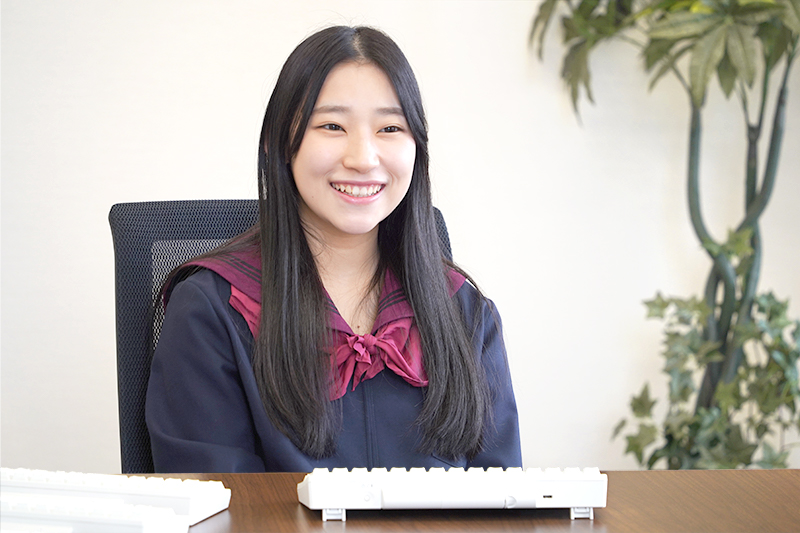
HHKB: It sounds like HHKB is suitable for rapid pace touch typing?
Matsuzuru: I’d say so. Once you get used to the key layout, the strokes are easy, and you can type for a long time without getting tired. And, I think the fact that it’s silent is also significant. There are a lot of regular keyboards that get so loud when you type fast. I appreciate silent designs like the HHKB. I get a little embarrassed when my keyboard is too noisy.”
HHKB: What’s next for you and what goals do you have?
Matsuzuru: As a high school senior, I've moved on from club activities where I played the guitar in the soft rock club. These days, my schedule is packed as I prepare for college entrance exams and gear up for the national contest in winter. When you compete in a competitive typing contest, you get a graph of your number of keystrokes over a minute and certification based on your number of keystrokes, which establishes your rank or level. The highest rank I’ve reached to date is 8, but my goal is to reach level 10 by the time I graduate. Nowadays, I'm practicing a lot each day to quickly adapt to the HHKB.
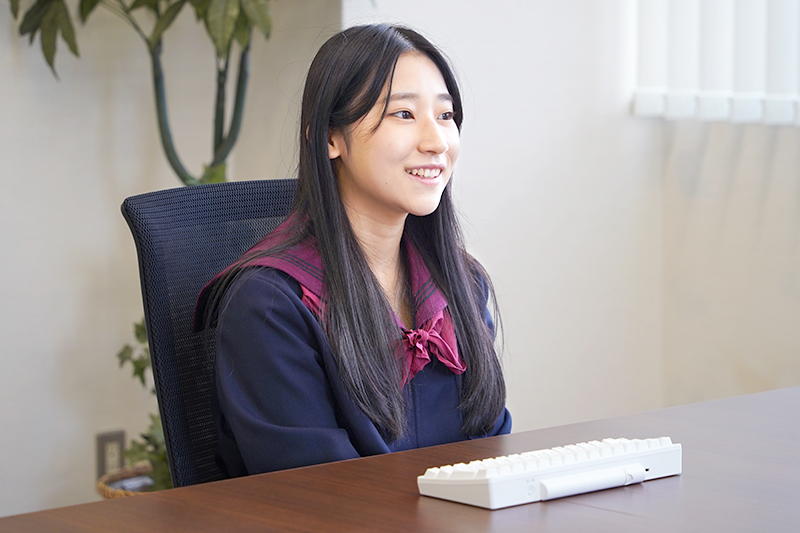
HHKB: Thank you for speaking with us about your experience with HHKB and best of you luck to you in all of your future endeavors!
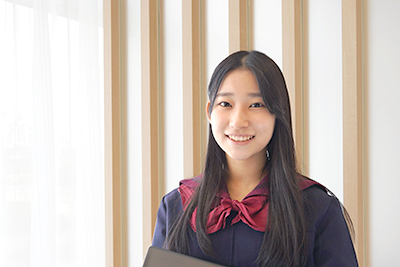
Reira Matsuzuru
Born in 2004. Received the title of Japan’s greatest competitive typist three times, during her 2nd year of junior high, 1st year of senior high, and 2nd year of senior high, by competing in the 18th, 20th, and 21st “Mainichi Personal Computer Typing Contests” respectively.
She is practicing daily to compete in her last national contest as a high school student this winter and to obtain level 10 rank (the highest level).
Twitter: @mr48850393

